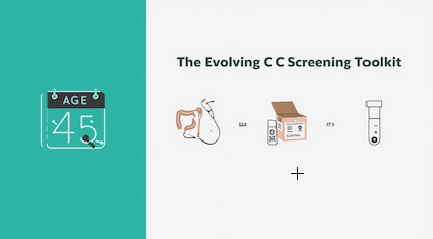The Neurobiological and Psychological Effects of Negative Media Consumption
- OliveHealth

- Sep 6
- 13 min read
Updated: Dec 1
by Ed Fuentes, D.O.

Emotional Impacts of Pervasive Negative Media
The contemporary media landscape, dominated by a 24-hour news cycle and algorithmically-driven social platforms, presents a significant challenge to human neurobiological and psychological health. This report provides a comprehensive analysis of how continuous exposure to negative news can trigger a maladaptive stress response. The data indicates that consuming a steady stream of sensational and distressing content activates the body's acute stress system, characterized by the release of hormones like cortisol and adrenaline. While the direct effects on stress and cortisol are measurable, the relationship with other key neurochemicals—dopamine, serotonin, and oxytocin—is more complex and indirect, revealing a self-reinforcing, "addictive" cycle that can be difficult to break.
The psychological ramifications extend beyond simple anxiety, encompassing heightened depression, mental fatigue, and a profound sense of helplessness. These effects are not uniform; they are often exacerbated in individuals with pre-existing vulnerabilities and may manifest differently across demographic groups. The report concludes with a series of evidence-based strategies for mindful media consumption, emphasizing that a balanced and intentional approach is essential for mitigating these adverse effects and preserving overall well-being.
1. Introduction: The Digital Information Age and the Human Stress Response
1.1 Defining the Modern Media Landscape
The current era of information consumption is defined by unprecedented accessibility and a relentless pace. The traditional, scheduled news broadcasts of the past have been replaced by a 24/7 news cycle delivered through a multitude of digital platforms, from television and online portals to social media. A key characteristic of this environment is a constant stream of sensational and often negative reporting, designed not only to inform but to capture and retain audience attention.1 This continuous availability fosters a behavioral pattern known as "doomscrolling," which is the compulsive and obsessive consumption of negative news and content. This behavior has been identified as a significant contributor to emotional and mental exhaustion, further compounding the adverse effects of negative information.2
1.2 The Primal Brain in a Digital World
Understanding the human response to this media environment requires a look at a fundamental neurobiological principle: the brain's hardwired threat-detection system. The brain has evolved to identify and react to potential dangers in the environment, activating a "fight-or-flight" response to ensure survival.1 Critically, the brain lacks a mechanism to distinguish between a physical, immediate threat—such as a predator—and a perceived, mediated one, such as a harrowing news report of a distant disaster.6 When exposed to a constant barrage of alarming information, the brain interprets this as an ongoing, omnipresent threat, triggering a prolonged and often maladaptive stress response that was originally designed for acute, temporary crises. This foundational principle explains why an alarmist broadcast, even when consumed passively, can have a tangible negative effect on an individual's psyche.1
1.3 Scope and Structure of the Analysis
This report proceeds by first examining the acute physiological response to negative media, focusing on the activation of stress hormones. It then delves into the more intricate and often indirect roles of key neurochemicals—dopamine, serotonin, and oxytocin—in shaping behavioral and emotional reactions. From there, the analysis synthesizes how these neurobiological changes manifest as psychological and cognitive symptoms. The report concludes with an overview of evidence-based strategies for mindful media consumption, providing actionable recommendations to mitigate the adverse effects detailed in the preceding sections.
2. The Activation of the Physiological Stress System: Cortisol and Adrenaline
2.1 The Fight-or-Flight Response and Neuroendocrine Activation
Exposure to negative media can directly initiate the body's acute stress response. Alarming news content, particularly that involving crises or traumatic events, triggers the activation of the sympathetic nervous system. This activation leads to the rapid release of stress hormones, primarily adrenaline and cortisol.1 The immediate physiological changes that accompany this response include a rapid heart rate, shallow breathing, and a heightened state of alert, all of which prepare the body to confront a perceived threat.5 While this response is adaptive in a true emergency, its frequent and prolonged activation due to media consumption can lead to chronic stress, which is linked to a host of physical and mental health issues, including fatigue, anxiety, and depression.1
2.2 Cortisol and the HPA Axis: A Nuanced Relationship
Cortisol, the body's main stress hormone, is released through the activation of the hypothalamic-pituitary-adrenal (HPA) axis. The relationship between negative media exposure and cortisol levels is more complex than a simple cause-and-effect reaction. A specific study revealed that while reading negative news excerpts did not cause an immediate change in cortisol levels, it did lead to a significant increase in cortisol reactivity when participants were exposed to a subsequent, unrelated stressor.9 This finding is critical, as it indicates that negative news acts as a "priming" agent, making the body's HPA axis hypersensitive and more reactive to future, real-world stresses. In essence, consuming distressing information prepares the body for a fight it may not be in, leaving it on a state of high alert that can be sustained for prolonged periods.
2.3 The Sex-Specific Nature of Stress Reactivity
A noteworthy and unexpected finding from the research is that the increased cortisol reactivity to a subsequent stressor was observed exclusively in women.9 This effect was coupled with a superior memory performance for the negative news excerpts among women compared to men.10 These results indicate a physiological mechanism in which exposure to negative media disproportionately primes the HPA axis in women, making them more susceptible to the effects of subsequent stressors. This heightened physiological response, coupled with a more robust cognitive encoding of the distressing information, suggests that women may be at a greater risk for a prolonged state of worry and rumination.1 This finding is also supported by neuroimaging studies that have observed sex-specific brain activation patterns when processing negative emotional stimuli.6
3. The Neurochemical Cascade: Dopamine, Serotonin, and Oxytocin
3.1 Dopamine: The Addictive Reward Loop
Social media platforms are meticulously engineered to create a self-reinforcing "dopamine loop" that encourages continuous engagement.11 Dopamine, a neurotransmitter central to the brain's reward system, is released in response to rewarding stimuli, such as receiving a "like," a "share," or a notification.11 This chemical response reinforces the behavior of checking for updates, creating a cycle of seeking and anticipating rewards. Algorithms are specifically designed to maximize screen time by exploiting this reward pathway, a mechanism that has been likened to substance addiction due to its ability to foster dependency and alter neural pathways.4
Social media use is linked to both elevated cortisol (stress) and dopamine (reward) activity.16 A crucial piece of evidence suggests that cortisol, the stress hormone, has been found to increase the production of some forms of dopamine.16 This interaction creates a particularly damaging feedback loop. When an individual is experiencing high levels of stress, it can make active coping with a problem more difficult and increase the likelihood of "escape coping," such as turning to social media for a distraction.16 This escape behavior is then reinforced by the dopamine loop, which is further amplified by the elevated cortisol levels, deepening the psychological dependency. This relationship explains why people might compulsively engage in behaviors like "doomscrolling," even when they recognize it makes them feel worse, as the physiological stress response itself contributes to the addictive behavioral response.
3.2 Serotonin: A Moderator of Negative Perception
Serotonin is a neurotransmitter that plays a key role in mood regulation, emotional stability, and feelings of happiness.17 It is a common misconception that negative news directly lowers serotonin levels. The provided research, in fact, does not support this claim. Instead, a recent study indicates that the primary function of serotonin in this context is as a moderator of the response to negativity.18 The study found that increasing serotonin levels made individuals less sensitive to punishing outcomes and better able to control their behavior when exposed to negative information. This finding redefines serotonin's role from a simple "happiness" chemical to a key protective factor that shapes how an individual processes and responds to adversity. This provides a neurobiological explanation for why individuals with pre-existing mental health conditions, which often involve serotonin dysregulation, may find their symptoms significantly worsened by consuming negative news.7
3.3 Oxytocin: Beyond the "Cuddle Hormone"
Oxytocin, a hormone traditionally associated with social bonding and trust, presents a more complex picture. There is no direct evidence in the provided data to establish a causal link between negative media and oxytocin levels. Instead, research indicates that oxytocin's function is more nuanced and context-dependent than its popular moniker of "the cuddle hormone" suggests.20 The hormone appears to act as a "volume dial" that amplifies existing social cues, whether positive or negative.20
For example, high levels of oxytocin have been found in women whose close relationships are in distress.20 In these situations, the hormone may signal a need to seek social contact from other sources.20 Oxytocin's ability to amplify social cues raises a powerful possibility in the context of media consumption. Social media, a major source of negative news and stress, is also a highly curated and often distorted social environment that can trigger feelings of loneliness, inadequacy, and jealousy through social comparison.2 If oxytocin's function is to amplify salient social cues, then in this digital context, it could potentially amplify the negative feelings that arise from these skewed comparisons. This may contribute to feelings of group isolation and an increased focus on "in-group" versus "out-group" tensions, all of which are documented negative outcomes of excessive social media use.21
Neurochemical |
Cortisol |
Dopamine |
Serotonin |
Oxytocin |
4. Psychological and Behavioral Ramifications
4.1 Mental Health Outcomes
The neurobiological changes triggered by negative news consumption have clear psychological manifestations. A constant stream of distressing information is directly linked to an increase in symptoms of anxiety and depression.1 Studies have shown that a mere 14 minutes of watching negative news bulletins can lead to an increase in anxious and sad moods.1 Furthermore, exposure to media portraying traumatic events, even from a distance, is significantly associated with symptoms of post-traumatic stress disorder (PTSD), particularly in individuals with pre-existing vulnerabilities.23 People with a history of mental health conditions are especially susceptible, with constant exposure to negative news leading to a worsening of their symptoms and a sense of hopelessness and despair.7
4.2 Cognitive and Behavioral Effects
Beyond specific mental health disorders, negative media exposure takes a broader cognitive toll. The constant barrage of information can overwhelm the brain, leading to mental fatigue, difficulty concentrating, and a "persistent sense of helplessness".1 This feeling of powerlessness is particularly pronounced when individuals feel they have no ability to influence the situations they are learning about on the news.5 The compulsive behavior of doomscrolling is a direct manifestation of this phenomenon, as it perpetuates a state of digital overload and reinforces a cycle of anxiety and depletion.2
4.3 Individual Vulnerability and Moderating Factors
It is important to note that the effects of negative news are not uniform. Individual vulnerability plays a significant role in determining the severity of the psychological response. People with pre-existing mental health conditions or a history of trauma are at a heightened risk for experiencing adverse effects, as the exposure can exacerbate their symptoms.7 Demographic factors also appear to play a role, with studies indicating that women, young people, and individuals in lower socioeconomic classes are more likely to exhibit news avoidance behaviors due to the negative emotional toll.26
While individuals may seek to manage this stress by reducing or avoiding news consumption, this response carries a potential societal cost. Consistent disengagement from news can lead to a reduced understanding of complex social and political issues. This can, in turn, result in a decreased likelihood of civic participation, as it becomes more difficult to make sense of what is happening in the world.26 This suggests that an individual's psychological response to negative media, while understandable, has a broader ripple effect that can contribute to a more polarized and less engaged society.
5. Strategies for Mindful Media Consumption and Neurobiological Health
5.1 Setting Boundaries and Curating Content
Mitigating the adverse effects of negative media requires an intentional approach centered on moderation rather than total avoidance.7 A key strategy is to establish and adhere to specific daily time limits for news and social media consumption, with recommendations often suggesting less than 30 minutes per day.1 Scheduling a specific "worry time" to check the news can help minimize compulsive checking and prevent constant exposure.1 It is also highly recommended to avoid consuming news, particularly before bedtime, to prevent sleep disruption and allow the brain time to settle.1 To break the cycle of information overload, individuals can turn off notifications, mute triggering words and accounts on social media, and consciously choose to consume content from fact-based, balanced sources rather than those that are sensational or alarmist.5
Table 2: Evidence-Based Strategies for Mitigating Media-Induced Stress |
Strategy |
Digital Hygiene & Boundaries |
Set Daily Time Limits (e.g., <30 mins) |
Schedule a "Worry Time" |
Avoid News Before Bed |
Turn Off Notifications |
Curate Your Sources & Feeds |
Mindfulness & Self-Care |
Practice Mindfulness |
Engage in Physical Activity |
Prioritize Sleep and Nutrition |
Behavioral Counteractions |
Focus on Real-Life Connections |
Take Action on an Issue |
5.2 Implementing Self-Care and Coping Mechanisms
Beyond managing digital intake, a suite of self-care and coping mechanisms can help counter the physiological and psychological effects of media stress. Practices such as mindfulness and meditation are effective tools for emotional regulation and for grounding oneself in the present moment.8 Regular physical exercise, adequate sleep, and proper nutrition are also essential for combating stress, as they directly support neurobiological health.17 For individuals who feel isolated or helpless, focusing on real-life interactions and what is within their control can be particularly beneficial.8 This can involve engaging in in-person activities with friends and family to foster genuine social bonds or getting involved with a community group that is working on issues they are passionate about.5
5.3 When to Seek Professional Help
While these strategies are effective for many, it is crucial to recognize when media-induced stress begins to overwhelm an individual's ability to cope. If stress, anxiety, or feelings of hopelessness become persistent and begin to disrupt daily functioning, sleep, or mood, seeking professional help is a necessary and important step.5 Mental health professionals can provide support and guidance to help individuals manage these symptoms and develop a healthier relationship with information consumption.
6.The Power of Positive Self-Talk
Positive self-talk and declarations, whether rooted in spiritual beliefs or secular principles, are incredibly powerful tools. They act as a defense against the negative media bombardment that has become a constant in our lives. This constant influx of negativity can be thought of as a kind of "sound toxin," infiltrating our brains and emotional centers and weakening our resolve.
By consciously using positive self-talk and affirmations, you're actively choosing to neutralize these harmful inputs. This practice helps to fortify your mental and emotional state, making you more resilient. It's not just about feeling better in the moment; it's about building a stronger, more positive foundation for your thoughts and actions.
7. Conclusion
The effects of negative media news are not superficial; they are deeply ingrained in our neurobiological and psychological systems. The evidence demonstrates a clear pathway where chronic media exposure activates the body's acute stress response, leading to a state of sustained arousal. This state of physiological stress can then fuel a compulsive, dopamine-driven behavioral loop, making it increasingly difficult to disengage. The relationship with serotonin reframes it not as a passive casualty but as a crucial moderator of our response to negative information, while oxytocin's function as an amplifier of social cues adds another layer of complexity to the psychological fallout.
In an era of digital overload, the findings of this report underscore the critical importance of being not just an informed consumer, but a mindful one. The ability to set boundaries, curate information sources, and actively engage in self-care is no longer merely a lifestyle choice; it is a fundamental practice for preserving mental and neurobiological well-being. By understanding the intricate interplay between media, hormones, and behavior, individuals can regain a sense of control and navigate the modern information landscape in a healthier, more intentional way.
There's a strong need for more research into the relationship between positive self-talk and mental health issues like autism, depression, and anxiety. Investigating how these practices can serve as a complementary tool in mental health treatment is a crucial next step. This topic would make an excellent subject for my upcoming blogs.
Works cited
Is Watching the News Bad for Your Mental Health? - Verywell Mind, accessed September 5, 2025, https://www.verywellmind.com/is-watching-the-news-bad-for-mental-health-4802320
Social Media Use, Mental Health, and Its Potential Effects on Immunity - Immunize Nevada, accessed September 5, 2025, https://immunizenevada.org/social-media-use-mental-health-and-its-potential-effects-on-immunity/
news consumption and your mental health - Change Mental Health, accessed September 5, 2025, https://changemh.org/resources/news-consumption-and-your-mental-health/
How Media Consumption Impacts Mental Health and Well-Being, accessed September 5, 2025, https://mypacifichealth.com/media-consumption-mental-health-effects/
Protecting Our Mental Health from Negative News Coverage, accessed September 5, 2025, https://hr.jhu.edu/wp-content/uploads/JHEAP_Negative-News-Coverage-and-Mental-Health.pdf
Do Women and Men Respond Differently to Negative News? | Politics & Gender, accessed September 5, 2025, https://www.cambridge.org/core/journals/politics-and-gender/article/do-women-and-men-respond-differently-to-negative-news/78F54D62ADA4EDD3A0EFDC97F297BD0B
The Negative Effects of News on Mental Health - Grow Therapy, accessed September 5, 2025, https://growtherapy.com/blog/is-news-bad-for-mental-health/
How Constant News Affects Mental Health and What You Can Do, accessed September 5, 2025, https://www.bannerhealth.com/healthcareblog/advise-me/the-relentless-news-can-harm-your-health
Staying informed without a cost: No effect of positive news media on ..., accessed September 5, 2025, https://pmc.ncbi.nlm.nih.gov/articles/PMC8553098/
There Is No News Like Bad News: Women Are More Remembering ..., accessed September 5, 2025, https://pmc.ncbi.nlm.nih.gov/articles/PMC3468453/
Are You Addicted to Social Media? | Lee Health, accessed September 5, 2025, https://www.leehealth.org/health-and-wellness/healthy-news-blog/mental-health/are-you-addicted-to-social-media
Understanding the Brain's Response to Social Media: A Closer Look at Dopaminergic Mechanisms - Be part of the knowledge - ReachMD, accessed September 5, 2025, https://reachmd.com/news/understanding-the-brains-response-to-social-media-a-closer-look-at-dopaminergic-mechanisms/2470999/
Dopamine Deficiency: Symptoms, Causes & Treatment - Cleveland Clinic, accessed September 5, 2025, https://my.clevelandclinic.org/health/articles/22588-dopamine-deficiency
Scrolling and Stress: The Impact of Social Media on Mental Health - McLean Hospital, accessed September 5, 2025, https://www.mcleanhospital.org/essential/social-media
Social Media Algorithms and Teen Addiction: Neurophysiological Impact and Ethical Considerations - PMC, accessed September 5, 2025, https://pmc.ncbi.nlm.nih.gov/articles/PMC11804976/
What Social Media Does to Stress and Hormones | Psychology Today, accessed September 5, 2025, https://www.psychologytoday.com/us/blog/digital-world-real-world/202502/what-social-media-does-to-stress-and-hormones
Serotonin: What Is It, Function & Levels - Cleveland Clinic, accessed September 5, 2025, https://my.clevelandclinic.org/health/articles/22572-serotonin
Serotonin changes how people learn and respond to negative information, accessed September 5, 2025, https://www.ox.ac.uk/news/2024-08-09-serotonin-changes-how-people-learn-and-respond-negative-information
Serotonin changes how people learn and respond to negative information, accessed September 5, 2025, https://www.medsci.ox.ac.uk/news/serotonin-changes-how-people-learn-and-respond-to-negative-information
Oxytocin's other side - American Psychological Association, accessed September 5, 2025, https://www.apa.org/monitor/2011/03/oxytocin
Oxytocin: What It Is, How It Makes You Feel & Why It Matters - HealthCentral, accessed September 5, 2025, https://www.healthcentral.com/mental-health/oxytocin
Social Media Effects: Social Isolation | Research Starters - EBSCO, accessed September 5, 2025, https://www.ebsco.com/research-starters/social-sciences-and-humanities/social-media-effects-social-isolation
The Impact of Trauma – Even from a Distance - American Psychiatric Association, accessed September 5, 2025, https://www.psychiatry.org/news-room/apa-blogs/the-impact-of-trauma-%E2%80%93-even-from-a-distance
Media Matters: Could Your Body or Brain Be Putting You at Increased Risk for Developing Psychiatric Symptoms Following Certain Media Consumption? – Noelle Smith, PhD, accessed September 5, 2025, https://istss.org/media-matters-could-your-body-or-brain-be-putting-you-at-increased-risk-for-developing-psychiatric-symptoms-following-certain-media-consumption-noelle-smith-phd/
Disasters can trigger hidden mental health crisis: Experts, accessed September 5, 2025, https://timesofindia.indiatimes.com/city/delhi/disasters-can-trigger-hidden-mental-health-crisis-experts/articleshow/123608083.cms
Why more and more people are tuning the news out: 'Now I don't have that anxiety' | Mental health | The Guardian, accessed September 5, 2025, https://www.theguardian.com/society/ng-interactive/2025/sep/01/news-avoidance-high-anxiety
5 Ways to Cope With the News | Northwestern Medicine, accessed September 5, 2025, https://www.nm.org/healthbeat/healthy-tips/5-ways-to-cope-with-the-news
Maintaining your mental health during negative news cycles - Papyrus, accessed September 5, 2025, https://www.papyrus-uk.org/mental-health-during-negative-news-cycles/
6 Tips to Help Take Control of Your Social Media Use and Improve Well-being, accessed September 5, 2025, https://www.psychiatry.org/news-room/apa-blogs/tips-to-take-control-of-your-social-media-use
Suffering from social media overload? 7 tips to help you cope ... - Calm, accessed September 5, 2025, https://www.calm.com/blog/social-media-overload
Oxytocin: Narrative Expert Review of Current Perspectives on the Relationship with Other Neurotransmitters and the Impact on the Main Psychiatric Disorders, https://pmc.ncbi.nlm.nih.gov/articles/PMC9318841/
Mindfulness in social media exposure: the pressure-reducing valve for fear of missing out and social media fatigue , https://www.frontiersin.org/journals/psychology/articles/10.3389/fpsyg.2025.1641462/full
The Associations Between Oxytocin and Trauma in Humans: A Systematic Review, https://pmc.ncbi.nlm.nih.gov/articles/PMC5838009/
Self-soothing behaviors with particular reference to oxytocin release induced by non-noxious sensory stimulation, https://www.frontiersin.org/journals/psychology/articles/10.3389/fpsyg.2014.01529/full
Roles of Oxytocin in Stress Responses, Allostasis and Resilience, https://pmc.ncbi.nlm.nih.gov/articles/PMC8745417/
Negative news evokes stronger psychophysiological reactions than positive news, https://www.psypost.org/negative-news-evokes-stronger-psychophysiological-reactions-than-positive-news/#:~:text=Although%20the%20findings%20show%20an,positive%20or%20neutral%20news%20items.




Comments